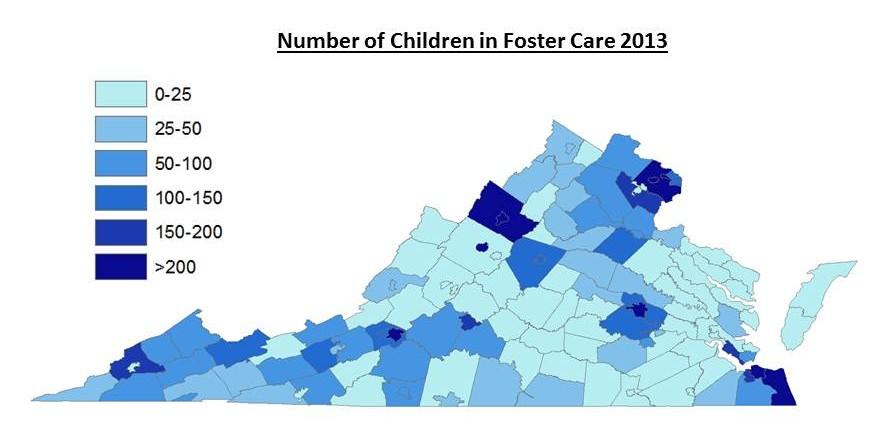Fostering a Better Future
May 2014 is National Foster Care Month and provides an excellent opportunity to recognize the important role of foster care in the lives of so many children and youth across the country as well as in the Commonwealth. In 2013, Governor Bob McDonnell launched his “Virginia Adopts: Campaign for 1,000” initiative to match 1,000 children in foster care to 1,000 adoptive families, the target was successfully exceeded by finding permanent homes for 1,008 children. This year, Governor Terry McAuliffe also recognized May as Foster Care Month for the Commonwealth of Virginia and emphasized that “every child and youth in foster care deserves the security and opportunity for growth that a family can provide”.
Foster care refers to “Twenty-four-hour substitute care for children placed away from their parents or guardians and for whom the local board has placement and care responsibility” as per the VDSS Child and Family Services Manual. This is a temporary service provided for children who are unable to live with their families and may be placed with relatives, unrelated foster parents, and group homes or in alternative arrangements. The Virginia Department of Social Services estimates that more than 4,000 children are in the state foster care system and over a 1,000 of these children are ready to be adopted.

While the overall number of foster children in Virginia has been declining since 2010, the patterns are more diverse at the local level. The map above shows the actual count of children and youth who were in care for at least one day during 2013. Foster children have a higher concentration in some metropolitan cities and counties such as Fairfax city/County and Falls Church, Harrisonburg/Rockingham, Norfolk, Richmond city, Roanoke city, Staunton and Virginia Beach, as well as a few Southwestern localities like Pulaski, Tazewell and Wise.
Adolescents aged 13-17 comprise 43% of the foster care population, and are the largest age cohort in Virginia. Almost half of the children in foster care are White, 33% are Black, 9% are Hispanic and 7% belong to two or more races; very few foster children are of Asian origin. Black and multiracial children are significantly overrepresented in the foster care population.

Nearly 3 out of every 1,000 children in Virginia require foster care. Reports show that for every 100 children aging out of foster care, more than half will face unstable housing conditions or homelessness, and 94% of foster youth may never graduate from college. Since two-fifths of foster children are in their teens, a majority of them will transition out of the child welfare system to enter adulthood without a permanent home or stable support network. Many may be at risk of socioeconomic adversity and encounter significant challenges in life. This makes it important to increase awareness and involvement in order to ensure that these foster children find a better future.


